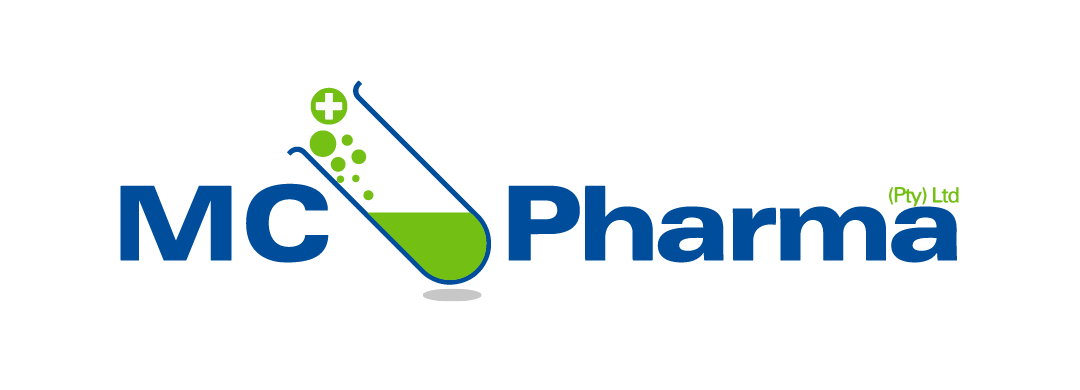eCTD Guide for South African Medicine & Health Product Submissions
- mcpharma01
- Jun 20
- 4 min read
Updated: Sep 5
Table of Contents
Introduction
The Electronic Common Technical Document (eCTD) is now the universal format for medicine dossiers. South Africa’s regulator, South African Health Product Regulatory Authority, requires all medicine & health product applications, variations and renewals to be uploaded via its eCTD Portal from 2024 onwards (ectd.sahpra.org.za).
Mastering eCTD management is therefore essential for local approval—and for leveraging the same dossier in other markets.

What Is the eCTD?
The eCTD is the digital, hyper-linked version of the CTD defined by ICH M8. It places every quality, non-clinical, clinical and administrative file in a fixed folder tree and links them through an XML “table of contents” backbone (ICH, ICH Admin). Regulators open that XML and click bookmarks to reach any page instantly—no paper, no couriers.
Why the eCTD Matters
Benefit | Advantage for applicants | Evidence |
Global acceptance | One core dossier serves FDA, EMA, SAHPRA and 20 + other agencies | EFPIA white paper (EFPIA) |
Faster reviews | Searchable PDFs; no shipping delays | SAHPRA Q&A & Portal (ectd.sahpra.org.za, SAHPRA) |
Built-in validation | Software flags naming, link or PDF errors before submission | SAHPRA Module 1 spec v3.1 (ectd.sahpra.org.za) |
Lifecycle clarity | Updates arrive as numbered “sequences” regulators can track | ICH eCTD spec 3.2.2 (ICH) |
Inside an eCTD Dossier
Module | Core content |
1 – Regional (ZA) | eCTD-1 form, GMP/CPP certificates, PI/PIL, cover letter, etc. (ectd.sahpra.org.za) |
2 – Summaries | Quality Overall Summary, clinical & non-clinical overviews and regional information |
3 – Quality | Full CMC data: composition, specs, stability and regional specific information |
4 – Non-clinical | Animal pharmacology & toxicology reports |
5 – Clinical | Human-trial reports, statistics & post-marketing safety data |
Each update is a sequence that adds, replaces or deletes files while preserving dossier integrity (ICH Admin).
SAHPRA’s Current Rules
Mandatory Portal – All orthodox and biological medicines must be filed via SAHPRA’s eCTD Portal; paper and NeeS are no longer accepted (ectd.sahpra.org.za).
ZA Module 1 v3.1 (Mar 2024) – Follow SA-specific folder names, envelope XML and validation checklist (ectd.sahpra.org.za).
Pre-submission validation – Submissions failing automated checks are rejected before scientific review.
Baseline conversions – Legacy paper/NeeS dossiers need a one-off sequence 0000 before any further variation.
Six Common Pitfalls & Quick Fixes
Pitfall | Rapid fix | Source |
1. Un-bookmarked or scanned PDFs | Use searchable templates; add bookmarks before compile | ClinReg article (Clinreg Partners) |
2. Broken hyperlinks | Validate links in an eCTD viewer; avoid absolute paths | ClinReg article (Clinreg Partners) |
3. Wrong sequence numbers | Keep a dossier log; always build from the last approved sequence | WAYS PS blog (WAYS) |
4. XML envelope errors | Use ePublishing software that auto-generates ZA envelope fields | SAHPRA spec v3.1 (ectd.sahpra.org.za) |
5. Portal upload failures | Test a small file early; upload in business hours; keep help-desk details handy | SAHPRA Q&A (SAHPRA) |
6. Resource & training gaps | Outsource to experts or arrange staff training on eCTD tools | WAYS PS blog (WAYS) |

How MC Pharma Makes It Easy
Turn-key compilation – We convert, hyperlink and publish a compliant zip that passes SAHPRA validation first time.
Pre-flight checks – >400 automated rules verify PDF versions, MD5 hashes and filenames.
Lifecycle management – We track every sequence from registration to annual retention, variations and updates.
Cross-market rollout – MC Pharma possesses expertise to develop customised dossiers from SAHPRA recognised reference authorities (RRA's) such as the EMA, Health Canada, MHRA, TGA, the FDA, for submission across a number of countries in Africa, thereby facilitating a wider market access.
Training & rescue – Need a quick fix for a rejected dossier? Our regulatory team can step in immediately.
Contact our Regulatory Affairs unit to discuss timelines and costs.
Eight Key Take-aways
eCTD is mandatory for human-medicine and health product filings to SAHPRA.
One dossier, many markets – global regulators accept the same core Modules 2–5.
Faster approvals – electronic navigation trims review time.
Built-in quality checks reduce refusals for technical reasons.
Clear lifecycle view lets regulators see every change sequence-by-sequence.
SA-specific Module 1 must follow the March 2024 v3.1 spec. (Regional)
Common pitfalls are avoidable with validation, sequence tracking and trained staff.
MC Pharma offers end-to-end support, saving time, budget and stress.

Frequently Asked Questions (FAQ)
What is the eCTD?
A standard, hyper-linked electronic dossier accepted by most regulators worldwide.
Is it mandatory in SA?
Yes—SAHPRA requires eCTD for all new submissions, variations and renewals (ectd.sahpra.org.za, SAHPRA).
Typical file size per sequence?
Variations: a few MB; new registrations with study reports: 1–3 GB.
Can I re-use my SA dossier for FDA?
Yes—swap in the US Module 1; Modules 2-5 remain unchanged.
MC Pharma baseline timeline?
Two to four weeks, depending on document quality and volume.
References
ClinReg Partners. (2024, 26 December). Navigating the challenges of eCTD submissions: What to look for and how to overcome pitfalls. https://www.clinregpartners.com (Clinreg Partners)
EFPIA eCTD Subgroup. (2021, 20 December). Global ICH eCTD adoption (white paper). https://www.efpia.eu (EFPIA)
International Council for Harmonisation. (n.d.). Electronic Common Technical Document specification v3.2.2. https://ich.org (ICH)
South African Health Products Regulatory Authority. (2024, March 11). ZA-SAHPRA eCTD specification v3.1. https://ectd.sahpra.org.za (ectd.sahpra.org.za)
South African Health Products Regulatory Authority. (2024, October 25). RIMS communication – eCTD Module 1 update. https://www.sahpra.org.za (SAHPRA)
WAYS Pharmaceutical Services. (2024). The complexity of eCTD compliance: Common challenges and practical solutions. https://www.waysps.com (WAYS)
SAHPRA. (n.d.). eCTD Submissions Portal. https://ectd.sahpra.org.za (ectd.sahpra.org.za)
Contact MC Pharma for Your eCTD Needs
Why choose MC Pharma?
With over 26 years of experience in navigating South Africa’s complex regulatory landscape, MC Pharma is your strategic partner for patient safety, regulatory excellence, and market success.



Comments